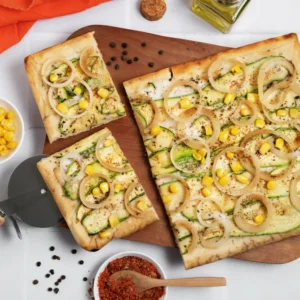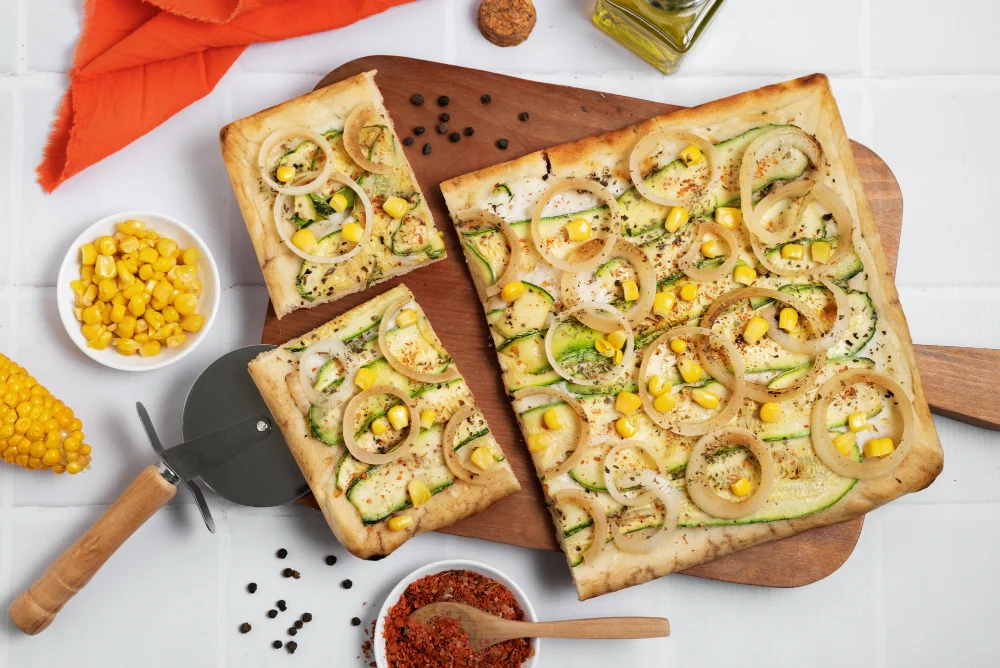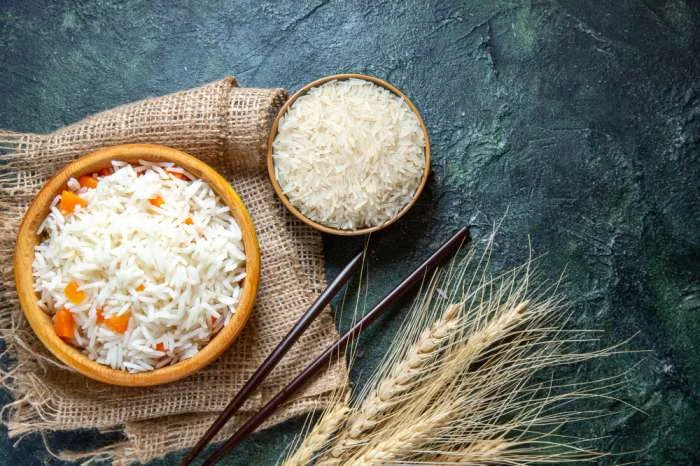Have you ever met a dish so simple, yet so elegant, that it quietly steals the spotlight from everything else on the table? That was exactly my experience with this Potato and Ricotta Puff Pastry Tart. It wasn’t at a fine-dining restaurant or a food blogger’s Instagram feed. It was in my own kitchen, on a slow Sunday afternoon, when I realised I had just the right ingredients—and a craving for something warm, golden, and unapologetically buttery.
There’s something deeply comforting about this tart. It walks the line between indulgent and rustic, effortless yet refined. And while puff pastry tarts might conjure images of complicated French recipes, this version couldn’t be more approachable. With a few pantry staples, a touch of technique, and the right layering, you’re in for a crowd-pleaser that feels fancy but eats like home.
Why This Tart Works: Flavour, Texture, and Technique
The genius of this tart lies in the contrast—flaky pastry, creamy ricotta, and soft, golden-edged potatoes all singing in harmony. But beyond taste, let’s talk science (yes, really!).
Dr. Alex Kershaw, a food scientist and lecturer at the University of Leeds, explains, “Puff pastry’s layers trap steam, which causes them to lift and crisp. But to avoid sogginess, you need a drier base—ricotta works perfectly when drained and bound with egg yolk.”
Pair that with waxy potatoes, which hold their shape and offer a slight bite, and you’re not just cooking—you’re balancing moisture, fat, and texture like a seasoned chef.
Ingredients You’ll Need
Before diving into technique, let’s cover the essentials:
- 1 sheet all-butter puff pastry (pre-rolled saves time)
- 2 medium waxy potatoes (Charlotte or Yukon Gold)
- 200g ricotta cheese, drained
- 1 egg yolk (for richness)
- 1 garlic clove, minced
- 1 tbsp fresh thyme leaves (or 1 tsp dried)
- 30g grated Parmesan (optional, but adds umami)
- 1 tbsp olive oil or melted butter
- Salt and pepper, to taste
- 1 beaten egg (for egg wash)
Step-by-Step: Crafting the Tart
1. Preheat and Prepare
Set your oven to 200°C (400°F). Line a baking tray with parchment and roll out the pastry directly onto it. Use a fork to gently prick the centre—this helps it bake flat while the edges puff.
Tip: Chill your pastry again before baking. Cold pastry + hot oven = maximum rise.
2. Prep the Potatoes
Use a mandoline or a sharp knife to slice your potatoes to around 2mm thickness. Toss them with olive oil, salt, and pepper. No need to parboil—the thin slices roast beautifully in the oven.
3. Mix the Ricotta Base
Combine the ricotta, egg yolk, garlic, thyme, and Parmesan (if using). Season well. You want a spreadable consistency—neither too runny nor stiff. Adjust with a spoon of cream if needed.
4. Assemble Like a Pro
Spread the ricotta mixture across the centre of the pastry, leaving a 1-inch border. Then layer the potatoes, overlapping slightly like roofing tiles.
Brush the pastry edge with beaten egg for that golden sheen.
5. Bake Until Beautiful
Pop the tray into the oven for 25–30 minutes. You’re looking for deep golden edges, bubbling cheese, and soft potato centres.
Let it rest a few minutes before slicing—it firms up beautifully as it cools.
First-Hand Experience: Tweaks That Changed Everything
I’ve tested this tart at least a dozen times. Here’s what I’ve learnt:
- Parmesan adds depth: I once skipped it. Never again. That nutty kick rounds out the ricotta.
- Thicker slices = uneven bake: Aim for uniformity. Too thick and the potatoes stay raw.
- Don’t overload: More filling doesn’t mean better—it weighs down the pastry. Keep it light and balanced.
What to Serve It With
This tart is surprisingly versatile. Here are a few of my favourite pairings:
- Simple salad with lemon vinaigrette
- Poached eggs on top for brunch
- Chilled rosé or sparkling water with lemon
You could also cut it into bite-sized squares for an elegant appetiser—it holds its shape like a dream.
Expert Endorsement: Why Ricotta Deserves More Love
According to Italian chef Giulia Ferri of Rome’s Osteria Verde,
“Ricotta is light but creamy. It’s the cheese that lets other ingredients shine—it’s humble but powerful.”
That’s the essence of this dish. It doesn’t shout. It whispers comfort, texture, and balance.
Common Mistakes and How to Avoid Them
- Soggy bottom? Make sure to drain ricotta properly and prick pastry centre.
- Overbaking? Trust your eyes more than the clock. Golden edges = done.
- Uneven cooking? Slice potatoes consistently and don’t overlap too much.
Storage and Reheating Tips
Leftovers (if you have any!) keep well:
- Fridge: 2–3 days in an airtight container
- Reheat: Use a hot oven (180°C) for 10 minutes to bring back crispness
- Avoid microwave: It turns the pastry limp
FAQs
Can I make this ahead?
Yes! Assemble it a few hours in advance and chill. Bake just before serving.
Can I freeze it?
It’s best fresh, but you can freeze leftovers. Reheat in oven only.
Is there a vegan version?
Use dairy-free ricotta, skip the egg yolk, and brush with olive oil instead of egg wash.
Can I use sweet potatoes?
Absolutely, but they cook faster—check at 20 minutes.
Is it gluten-free?
Only if you use gluten-free puff pastry (available in most supermarkets).
Final Thoughts & What’s Next
This tart isn’t just a recipe—it’s a blueprint for slow, satisfying cooking. A dish that rewards you not with complexity, but with clarity: good ingredients, a little attention, and the joy of pulling something golden and bubbling from the oven.
Have you tried a twist on this? Swapped in blue cheese, or added caramelised onions? I’d love to hear how it went—drop a comment below and share your take.
Read Also: Can You Freeze Ricotta Cheese?


















